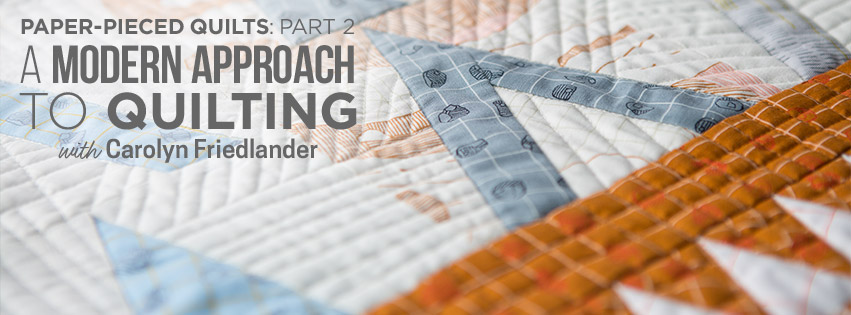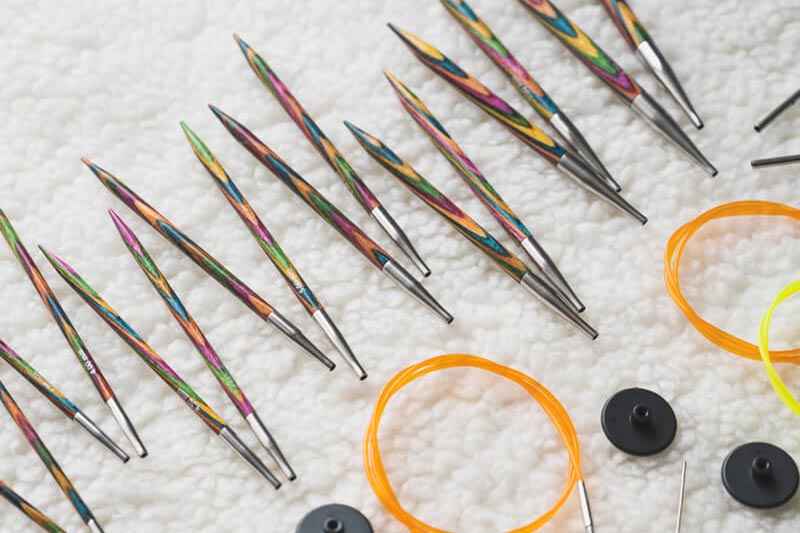Knitting is the perfect way to relax and enjoy the hours spent in airport terminals and airplane seats. Not only does it help pass the time in a productive way, but your project will always remind you of all the places you visited while knitting it. It’s no wonder knitters want to know if it’s safe to bring their beloved knitting needles onboard an airplane.
There’s a lot of anecdotes and cautionary tales about whether it’s possible to get knitting needles through airport security, which airports, airlines, or countries are more lenient (or strict) about carry-on knitting needles, and whether some kinds of knitting needles are more likely to be confiscated at the terminal. In most countries, TSA or airport security does permit you to bring your knitting needles on the plane with you in your carry-on, but the exceptions might surprise you.
We're going to share with you some do's and don't's of flying with knitting needles, but if you'd like to skip straight to our recommendations:

In this guide, we compile a list of the safest knitting needles for air travel as well as some tips for packing knitting needles in your carry-on baggage so that they are less likely to arouse inspection at the airport, and finally share an extensive list of which countries and airlines specifically approve or prohibit knitting needles onboard while flying internationally.
The absolute worst knitting needles to bring on a plane
It may go without saying, but by far the worst knitting needles you could try to bring onboard a plane are classic straight needles — not only because the long ends are most likely to poke and annoy your seatmates or be damaged in your carry-on, but also because they are the most threatening and weapon-like of all the knitting needle styles. Airport security personnel are trained to be on the lookout for sharp objects, and a 14” pointed piece of metal or wood is definitely going to raise a few eyebrows, no matter how soft the yarn wrapped around them.
In second place behind straight needles are double-pointed knitting needles (DPNs). You may not have the dangerous length of a straight needle, but you have many more sharp points. If skewers, nail files, letter openers, and tent pegs are dangerous enough to be confiscated on site, you can bet a set of DPNs would set off some well-meaning safety inspector. If you’re going to be knitting socks, you should bring one or two circular knitting needles instead of DPNs.
Metal knitting needles of any style are more likely to set off alarms, especially via X-Ray technology, than wood, bamboo, or plastic needles. Very thin, sharply pointed sock knitting needles like HiyaHiya Sharps pose more of a danger than average knitting needles when inspected by security personnel who are continually on the lookout for improvisable weapons. It’s safest to choose a knitting project using size US5 or larger knitting needles for their blunter tip — that means no socks or small-gauge projects. While we're on the subject of things not to bring onboard an airplane, make sure to leave your yarn cutter pendant at home.
Make sure to bring your yarn in the carry-on with you, in case you are asked to demonstrate the use of the knitting needles, and bring only the needle size you need for the current stage of your project, not an entire set.
How to sneak knitting needles past airport security
There are two basic steps to getting your carry-on knitting project past security without issue:
- Make sure your knitting needles don’t seem obviously dangerous on the baggage scanner.
- If you do get stopped for an individual inspection, minimize the risk to your work-in-progress should your knitting needles pose a concern.

Inconspicuously pack your knitting needles into your carry-on
The best way to bring your knitting onboard a flight is to use an interchangeable knitting needle set, for a number of reasons. First, you can unscrew the potentially problematic sharp points from the cables and tuck them in a pencil case or wherever you’re storing your pens — on an x-ray machine, they won’t look any different. Once you get to your gate, you just twist the tips back on and you’re back to knitting with only a few seconds' sacrifice.

Even if you’re unlucky enough to get stopped for a more thorough search, the loose interchangeable tips amidst your pens and pencils will probably be of little interest to the customs or baggage inspectors. Neither is a thin cable inside a half-finished scarf likely to even register among the many factors the security personnel are mentally checking off while evaluating your belongings.
What to do if you get stopped by security with knitting needles
On your most unlucky day where you end up eyeball-to-eyeball with a grumpy inspector seemingly determined to ruin as many passengers’ days as possible, being able to separate the “potentially dangerous” knitting needle tip from an innocuous piece of cord or lifeline string will save you from the agonizing experiences so many knitters have faced in airports -- forced to cut the needles off their own circulars or watch the security agent toss the whole project, yarn, needles, and all, into the trash before their very eyes.

It’s that outcome we want to help you avoid, and that’s why we think interchangeable knitting needles are the safest bet. Interchangeable kits usually have some type of end cap you can use to turn the center cord into a lifeline, meaning you won’t drop any stitches in the shuffle of schlepping your gear through a complex itinerary, and allowing you to store the points separately from your project.
Even if you do have to part with a pair of interchangeable tips, they can easily be replaced.
Compare the loss of a pair of interchangeable tips to having a nearly cast-off silk top, the remaining yarn, and circular knitting needles confiscated on your way home from an otherwise lovely week at the beach.

TSA, Airport security and in-flight attendants have ultimate jurisdiction
Please keep what compassion you can front-of-mind for those who take seriously their commitment to ensuring you can travel the skies free of danger. The security personnel who are evaluating every item that each person brings into an air terminal have the responsibility and training to discern potential weapons for the sake of everyone's safety.
Despite the lists of prohibited and acceptable items for hand baggage published by countries (which we’ve compiled below), the ultimate decision over an object’s suitability always rests in the security agent in front of you. Sure, you can wave your print-out of the TSA’s recent tweet specifically allowing knitting needles right under their nose, but your belligerency may result in you ultimately surrendering said knitting needles despite the ‘letter of the law’.
Your safest course of action is to remain respectful and nonplussed, rather than anxious, combative, or frantic, while someone is evaluating you and your belongings for their potential to harm others.
The very best knitting needles for air travel
Altogether, the best knitting needles for flying are interchangeable knitting needles with a somewhat blunt tip, preferably not metal, easy to twist on and off, individually replaceable, with cable caps, and still a pleasure to use once you check in to your holiday.
Our favorite set that meets those expectations is the Addi Click Olive Wood Interchangeable set. The smooth hardwood tips are more rounded and less likely to arouse suspicion than the sharper interchangeable knitting needle sets out there. Addi interchangeable kits come with a female-to-female connector, which turns the center cable into a true loop, preventing any stitches from sliding off in transit.

Rather than the typical keyed type of connector most interchangeable sets use, the Addi Clicks use a push-and-twist connection method that securely locks the needles on but doesn’t need any key or special tool to disassemble, which would come in handy in a worst-case-scenario where you’re forced to part with your tips quickly or risk losing your entire project.
Addi knitting needles have an excellent lifetime warranty, should you experience any issues with them, and the interchangeable tips can be replaced individually if you should be parted from a pair while on your travels. We love them so much, we recommend the original Addi Click Turbo Interchangeables in our guide to the best interchangeable knitting needles. However, some knitters report that the nickel plating tarnishes if used after applying sunscreen, so we hesitate to recommend it for beaachside travel knitting. Still, if the best set of knitting needles is one you can use both at home and abroad, so much the better for you.
If you don't knit with fresh sunscreen or moisturizer on your hands, the Addi Click Turbo Interchangeables are a good choice for flying as they have a blunter tip profile than other metal interchangeables. When sorted with your pens, the hollow metal needles from Addi are inconspicuous under baggage screening imagery. The classic Addi Clicks are somewhat more affordable than the Addi Olive Wood set, but the sets are cross-compatible so if you start with one, you can add on in the sizes you use most.
The safest bet for travel knitting needles
For something that barely looks like a knitting needle at all, check out the Prym Circular Knitting Needles, which we also happen to recommend in our guide to the best ergonomic knitting needles for hand pain. At just $10 a pair, they're very economically priced for their quality. These award-winning German-engineered knitting needles are made from a flexible, high-performance synthetic material, extruded into a triangular shape with three sides for needles that don't roll away. Each tip ends in a characteristic teardrop shape, intended to prevent accidental dropping of the stitch or yarn. It would be difficult to feel threatened by the shape of the Prym ergonomic needles, as the tips are very rounded and the needles have some flex. They also won't show up as metal or wood spikes on imaging equipment. We love these needles for traveling to countries that are more likely to confiscate your needles. (For a table of common destinations and their knitting needle policies, keep scrolling down.)
If you’re the risk-averse type who would rather keep a second set of less precious knitting needles on hand, then the Denise Bright Interchangeables are for you. Their brightly colored, rounded plastic tips look like nothing so much as a children’s toy, which may not be everyone’s aesthetic, but it does make them look almost comically harmless.
The Denise interchangeable needles also have a bit of flex, should anyone need to test whether they’d conceivably be used as a stabbing implement. The kit comes with a set of cable end-caps that will keep loose stitches from slipping off the tips while the needles are unattached.
The Denise interchangeable cables themselves are not nearly as flexible as other interchangeable sets, and the joins are less forgiving. If you’re used to other interchangeable knitting needle sets, you’ll have a hard time being impressed with the build quality of the Denise Brights, but they will stand up to being tossed thoughtlessly in a beach bag and their bright colors will make them easy to spot if they end up half-buried in sand or rolling around under the back seat.
If you’re used to other interchangeable knitting needle sets, you’ll have a hard time being impressed with the build quality of the Denise Brights.

Originally, at just $60 or so for the set of 10 pairs of needles, they were such an economical option for interchangeable knitting needles that it really wouldn’t hurt to lose a needle on a trip. Unfortunately, stock issues have raised the price of this set around 30% since we previously reviewed this set. If you're only looking for sizes US5 through US9, you can buy the smaller 5-pair kit or larger sizes US10 through US15 in pastel for around $35.
Which Countries Ban Knitting Needles on Planes
The majority of countries, especially those in the EU, have adopted the same section of policy from the European Commission on Transportation and Mobility that bans generally sharp objects, but makes no specific mention of knitting needles. Countries who have published that or a similar policy are marked below as “Not specifically prohibited.”
Some countries have specifically asserted that knitting needles can be carried onboard past security; those countries are listed below as “Specifically Allowed.”
Finally, France and Mexico have gone so far as to specifically prohibit knitting needles in carry-on baggage brought through security checkpoints. Plenty of air travelers successfully bring their knitting needles through security checkpoints in those countries every year, but their success is not proof that you won’t be expected to surrender your needles should airport security discover them.
For passengers who want to test their luck flying out of Mexican or French airports with their knitting needles in tow, it’s particularly important to minimize the appearance of your knitting needles, separate the tips from the interchangeable cables, and choose knitting needles that are as blunt as possible, to avoid suspicion. The author has personally flown out of Cancun and Los Cabos airports with knitting needles in carry-on baggage without incident, but other travelers have not had the same fate. (We want to make clear that the Editors of the Knitting Needle Guide do not condone breaking any federal or international laws when traveling with knitting needles.)
Remember, you are always free to pack your knitting needles in checked baggage — any airline or airport employee will tell you that it’s the safest place for your knitting needles.
All of these tips and recommendations are provided to help you have the best experience in your travel knitting, but please use your best judgement and know that your mileage (pun intended) may vary.
Official Airline Policies on Knitting Needles in Carry-On by Country
If you’re asking, “Can I take knitting needles on a flight to [your destination]?” check out the table of the most common destinations and their aviation authority or airport’s rules for whether knitting needles are allowed in hand baggage.
Remember that while these are the written policies, each airport and security agent has ultimate authority over what is deemed a potential hazard onboard, and that just because American TSA let you out of the country with your knitting needles in your bag doesn't mean another country will let you back in.
| Country | Are Knitting Needles allowed in Carry-on? | Source |
|---|---|---|
| United States | Specifically Allowed | 1, 2 |
| United Kingdom | Specifically Allowed | 1, 2 |
| Canada | Specifically Allowed | 1 |
| Mexico | Specifically Prohibited | 1 |
| EU | Not Specifically Prohibited | 1 |
| Australia | Specifically Allowed | 1, 2 |
| Chile | Not Specifically Prohibited | 1 |
| China | Not Specifically Prohibited | 1 |
| Finland | Specifically Allowed | 1 |
| France | Specifically Prohibited | 1 |
| Germany | Not Specifically Prohibited | 1 |
| Greece | Not Specifically Prohibited | 1 |
| Iceland | Not Specifically Prohibited | 1 |
| India | Not Specifically Prohibited | 1 |
| Italy | Not Specifically Prohibited | 1 |
| Japan | Specifically Allowed | 1 |
| Norway | Specifically Allowed | 1 |
| Poland | Not Specifically Prohibited | 1 |
| Portugal | Not Specifically Prohibited | 1 |
| Russia | Not Specifically Prohibited | 1 |
| Spain | Not Specifically Prohibited | 1 |
| Sri Lanka | Not Specifically Prohibited | 1 |
| Sweden | Specifically Allowed | 1 |
| Switzerland | Not Specifically Prohibited | 1 |
| Thailand | Not Specifically Prohibited | 1 |
| Turkey | Not Specifically Prohibited | 1 |
If your destination is not listed, look for the civil aviation authority website for that country and search for 'hand baggage' or 'prohibited items'. You should also consider checking your airline’s policy on hand baggage, as the in-flight staff have final jurisdiction once you’re in the air.
Featured Image by Ryan McGuire from Pixabay.











